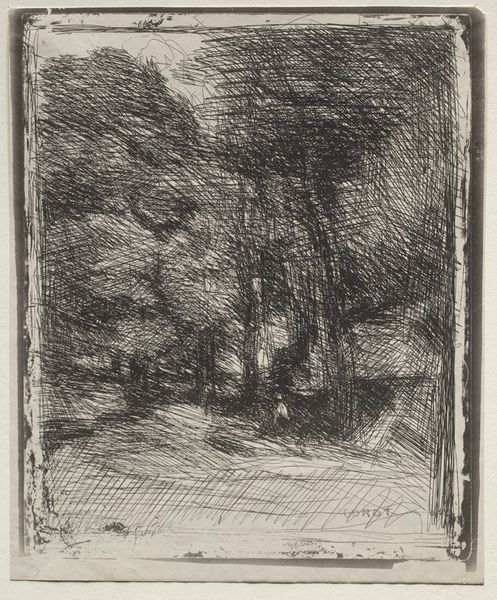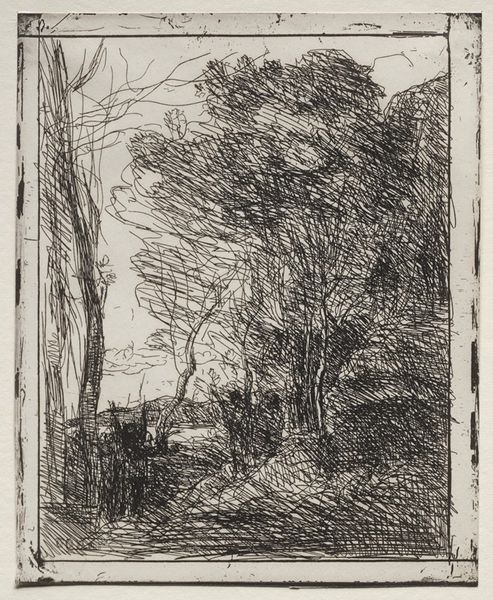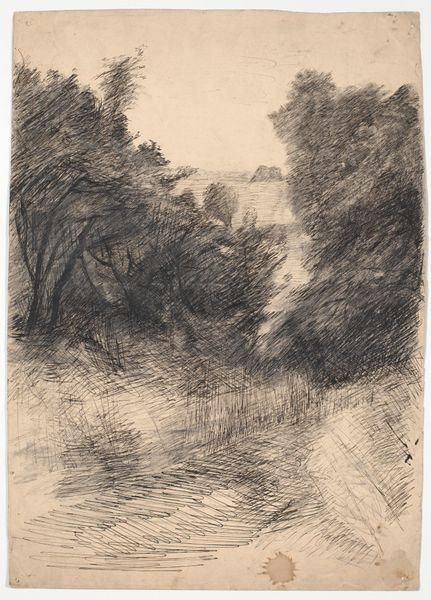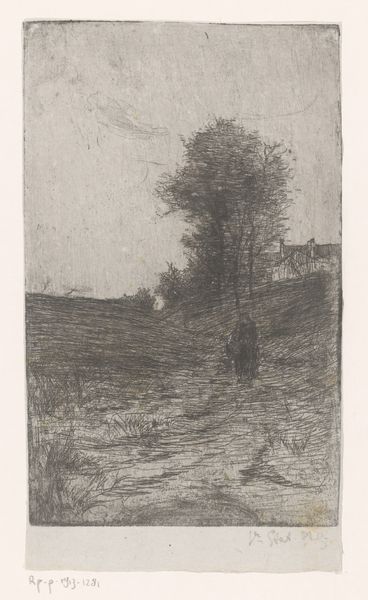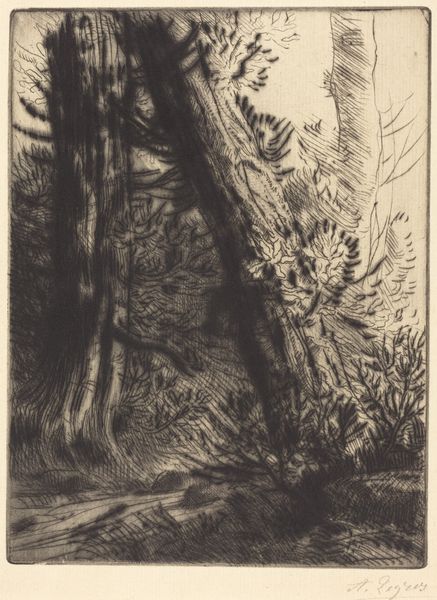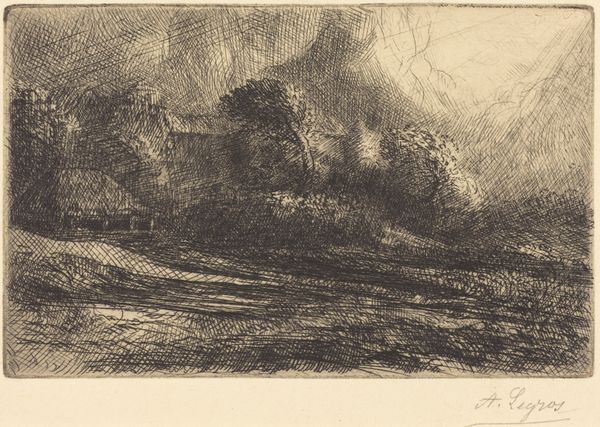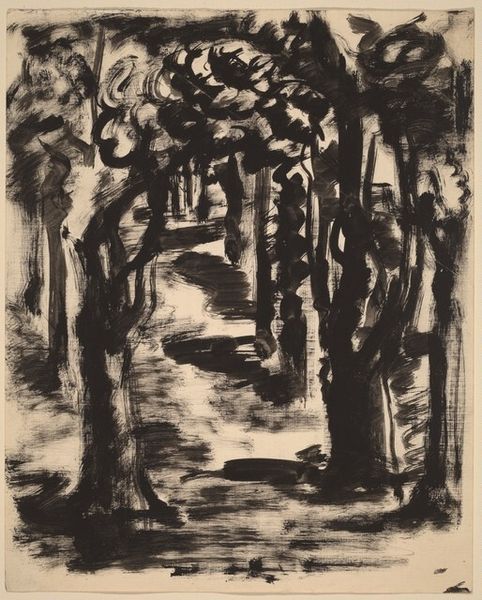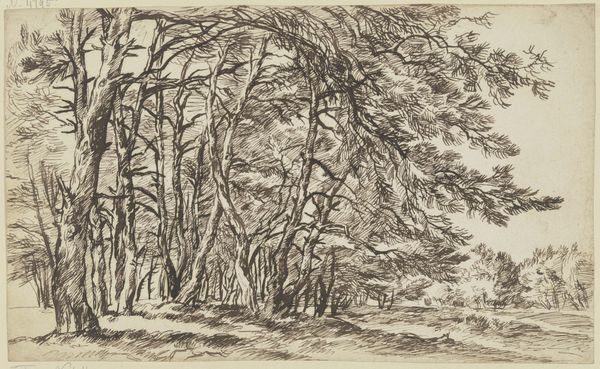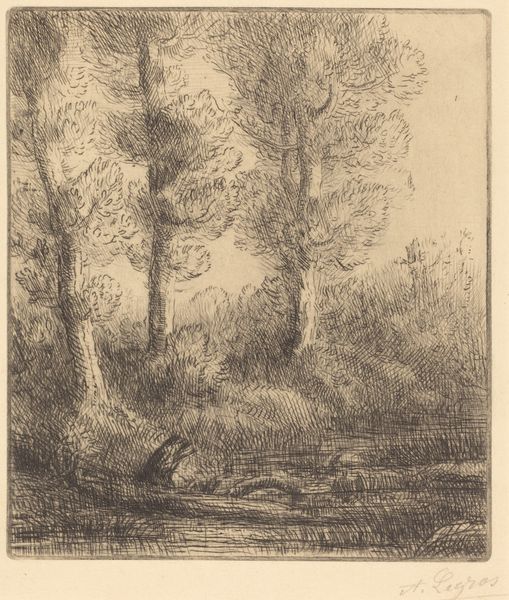
Dimensions: 184 × 151 mm
Copyright: Public Domain
Editor: This is "Souvenir of Bas-Bréau," an etching by Camille Corot from 1858. Looking at all those dark lines, I get a strong sense of being surrounded, almost enveloped, by this thick forest. What strikes you most about this image? Curator: The density certainly pulls the eye in, doesn't it? Consider how Corot uses line. Not just to describe the scene, but to create a tangible feeling of enclosure. Do you think that this close, almost claustrophobic feeling aligns with other artistic depictions of forests we might recognize in folk tales or even psychological landscapes? Editor: I can see that. Fairy tales often portray forests as places of danger and mystery. Are you saying that Corot’s personal experience or cultural memory might inform his approach to representing this forest? Curator: Precisely! Forests in art and lore are often symbolic – spaces of transformation, confrontation with the unknown, and ultimately, self-discovery. Corot's choice of dense, interwoven lines could suggest that engagement. Note also the light area in the middle ground. Is that beckoning us, calling us forward to explore what is within the woods? Editor: The light does create a focal point, almost like a promise. This image definitely sparks my imagination, like I’m stepping into an old story. Curator: And perhaps a reflection of your own relationship with the wild? Every mark carries intention, echoes from experiences known and unknown. Etching allows for the creation of myriad expressive and reproducible lines, giving rise to distribution and perhaps broad, shared experience. Editor: So, it’s not just a pretty picture of a forest; it’s a mirror reflecting our own understanding and emotional connections with such spaces. That’s quite profound. Curator: Exactly! By exploring symbols and imagery in works like this, we understand our history.
Comments
No comments
Be the first to comment and join the conversation on the ultimate creative platform.
